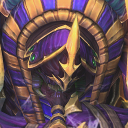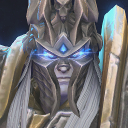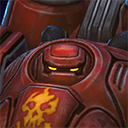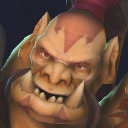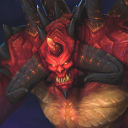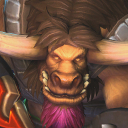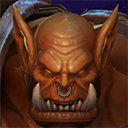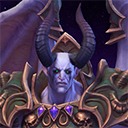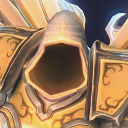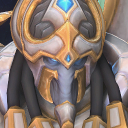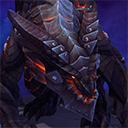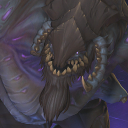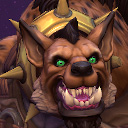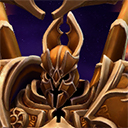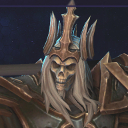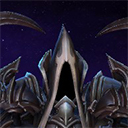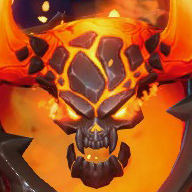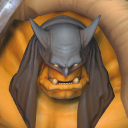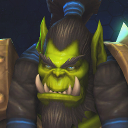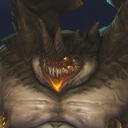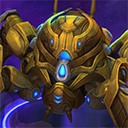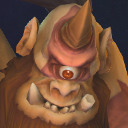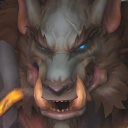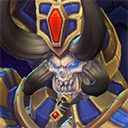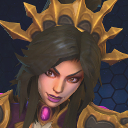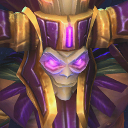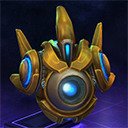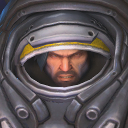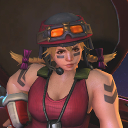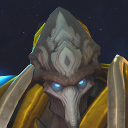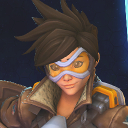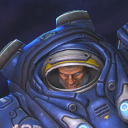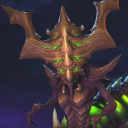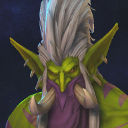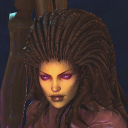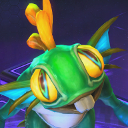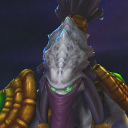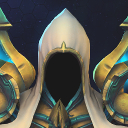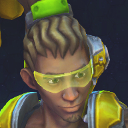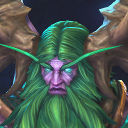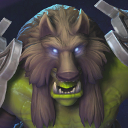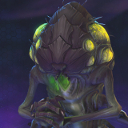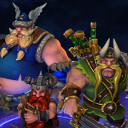Opening Moves
A detailed explanation of all strategic options available at the start of a game.
Introduction
There are various strategies that can be used in the first minute of a game, each one with a different set of advantages and disadvantages. In this guide we take a look at each opening move in order to understand when and why they are played, as well as how to counter them.
Group Opening
The group opening consists of having your whole team in the same lane for around 30 seconds, soak all Experience from the first wave of Minions, and then immediately split across all lanes to start soaking Experience there as well.
As you may know already, the group opening is the most common one on 3-lane Maps. The viability of this strategy is based on the fact that Minions take slightly more time to clash with enemy Minions on side lanes compared to the middle lane, something that is not true for 2-lane Maps.
Your team should not automatically go for the group opening because, compared to the enemy team, a given team will often have more tools to be able to get more value from that kind of start. The loading screen is a good moment to evaluate which team can get more value from an early brawl and to choose your opening move accordingly.
Being all together makes it easier to clear the first wave of Minions without risking to be engaged when outnumbered, something that can easily happen if the enemy team chooses the group opening but your team goes for the split opening instead. To make it simpler for everyone, wait for Minions to stop walking and then start clearing them.
By not allocating too many Heroes in a side lane, you do not risk that the enemy team surprises you with a siege opening in the middle lane or, even worse, in the opposite side lane. If you are not ready to quickly rotate there, an enemy team with a lot of siege power will be able to take down at least a Tower for free, so you better have most if not all Heroes in the middle lane until you see where the enemy Heroes are.
While playing on Maps where the 4-man prefers to rotate between 2 lanes, the team who perform better during the first brawl (either by having more waveclear or by having more kill potential) will have a rotation advantage, meaning that they will tend to clear the next few waves of Minions slightly before the enemy team. When a team is leading the rotation, it becomes easier for them to harass enemy Heroes who are trying to rotate and further slow down their clearing speed by zoning or even dismounting them.
Considering that it can easily result in a team fight, the group opening is great for Heroes featuring Quests that must be stacked by interacting with enemy Heroes and is bad for Heroes who have a weak early game but a strong late game or, more in general, that are too weak in team fights at the beginning of the game.
While going from a lane to another, be careful that the enemy team isn't going for a trap opening! If they aren't in vision and you cannot see them on the Minimap, you better take a safer but longer route because dying will cause you to lose a lot of Experience from Minions, in addition to the Experience the enemy team will gain from killing you.

Siege Opening
The siege opening is executed by playing in the opposite way compared to the group opening as it consists of having your whole team in a side lane. Be aware that this tactic only works when your team has enough siege power to quickly take down a Tower and the enemy team is slow to rotate there.
All we are trying to do while playing is to slowly build an advantage for the late game by taking favorable trades during the course of the game, therefore any damage done to enemy Structures is welcome, even if we do not end up destroying them immediately.
If while the game is loading you notice that the enemy team has a lot of siege power, stay on your Mount and grouped approximately in the middle of the battlefield (even on 2-lane Maps), so that you will be able to immediately rotate where the enemy team appears to defend, regardless of which lane they will choose.
A team featuring The Lost Vikings on big Maps (for example Cursed Hollow) can easily execute this strategy because they will not need to think about soaking Experience from lanes anymore; instead, they will be sieging as a group of 4 Heroes while the enemy team will struggle to defend as it will not be easy for them to keep 4 Heroes in that lane and at the same time cover two lanes with a single Hero, unless they can double soak and the Map is not that big.
There is a team composition featuring Lt. Morales with ![]() Medivac Dropship,
Tyrael with
Medivac Dropship,
Tyrael with ![]() Sanctification,
and 3 Heroes who can deal a lot of siege damage
which heavily prefers to start this way, to the point that on some Maps
(for example Infernal Shrines) they will immediately focus
the Fort in a side lane from the side instead of taking down the Towers first
because they do not care about dying in the process, especially in the early game
where killing Heroes is worth less than clearing a wave of Minions.
In short, the whole Medivac Backdoor strategy (also called Juice Pirates)
consists of taking down a Fort before Level 10,
use
Sanctification,
and 3 Heroes who can deal a lot of siege damage
which heavily prefers to start this way, to the point that on some Maps
(for example Infernal Shrines) they will immediately focus
the Fort in a side lane from the side instead of taking down the Towers first
because they do not care about dying in the process, especially in the early game
where killing Heroes is worth less than clearing a wave of Minions.
In short, the whole Medivac Backdoor strategy (also called Juice Pirates)
consists of taking down a Fort before Level 10,
use ![]() Medivac Dropship to go straight for a Keep at Level 10
with the help of
Medivac Dropship to go straight for a Keep at Level 10
with the help of ![]() Sanctification to protect the whole team in the process,
and then use
Sanctification to protect the whole team in the process,
and then use ![]() Medivac Dropship again to go for the enemy Core for doing the same thing.
Medivac Dropship again to go for the enemy Core for doing the same thing.

Gank Opening
The gank opening consists of trying to kill an isolated enemy Hero (usually the enemy Offlaner) by committing at least 2 Heroes (usually your Tank and your Offlaner) in a side lane in case of 3-lane Maps or in the top lane for 2-lane Maps.
To execute this strategy, your ganking squad needs tools to easily punish enemy Heroes that are alone in lane: crowd control to stop their retreat or mobility to chase them, and enough damage to take them down before they get to safety. Once you kill the enemy Hero that was taking care of that lane, you can deal siege damage to enemy Towers before someone comes or, alternatively, you can try to stop whoever is coming there to soak Experience.
To play against this strategy, do not clear the wave of Minions in your lane, else you will have to expose for soaking Experience; instead, try to freeze it near your Towers, so that enemy Heroes cannot surprise you from the side or from behind and you can quickly retreat to safety when necessary.
A team featuring The Lost Vikings on medium-sized Maps (for example Infernal Shrines) can easily use this strategy because they will not need to think about soaking Experience from lanes anymore; instead, they will be roaming in a group of 4 Heroes from a lane to another and attempting to catch enemy Heroes off-guard with constant ganks.
If you are playing a Hero who can easily escape (such as Muradin), you can try to slow down enemy Heroes who are trying to rotate there so that they will not be able to reach that side lane in time to soak all the Experience from its Minions, causing an Experience difference in your team's favor.
Trap Opening
The trap opening consists of hiding in a bush and waiting for the enemy team to expose. The best locations to use this tactic are the paths where, on 3-lane Maps, enemy Heroes will walk from the middle lane to side lanes because most teams tend to group middle by going for the group opening and someone will eventually need to rotate to a side lane, hopefully by walking right into your trap without checking the bush you are hiding in.
As soon as an enemy Hero gets nearby the bush you are hiding in, engage them before they get an opportunity to either check the bush or simply walk away. If you manage to get a kill, try to stop the rest of their team to cover a side lane, something that should be easy while they lack a Hero, however, do not forget to soak Experience from enemy Minions as well.
To play around this strategy, if you notice that some or all enemy Heroes are missing from the Minimap, either take a long but safe path while rotating to a side lane or check bushes on your way there. You can check them by using long-range Abilities that give vision or just skillshot-based Abilities as they give vision for a brief moment.
Split Opening
The split opening consists of skipping the middle brawl by immediately distributing Heroes across all lanes (usually 1-3-1 on 3-lane Maps and 1-4 on 2-lane Maps), resulting in a relatively safe start for your team as no one will need to rotate between lanes to soak Experience from enemy Minions and risk to be ganked or trapped right at the start of the game.
You can go for this strategy when your team features Heroes who are not that good in team fight, especially if they have high waveclear to shove enemy Minions before enemy Heroes can come to soak Experience.
Avoid this strategy when your team features a lot of Heroes that needs to interact with enemy Heroes to stack their Quests or when the enemy team has a lot of siege power that you want to counter by staying grouped in the same lane where they are, both cases where the group opening will perform better than the split one.
When your team is going for the split opening, be extremely careful in lane because the enemy team could be playing for a gank opening instead. To play around that, if you do not see some enemy Heroes on the Minimap for a few seconds, assume they are coming for you or that they are already in the closest bush on your side.
Changelog
- 07 Dec. 2021: Guide reviewed for the latest Major Patch.
- 06 May 2021: Guide created.
Elitesparkle has been hooked on Heroes of the Storm since day one in 2015. Over the years, he has consistently competed at Master level across multiple Seasons and has even climbed into Grand Master a couple of times. Known for his logical mindset and love for theorycrafting, he thrives on breaking down the game's mechanics and engaging in high-level strategy discussions with the community.
- Heroes of the Storm Balance Patch Notes: December 12
- Heroes of the Storm Live Patch Notes: December 1
- Heroes of the Storm Live Patch Notes: September 30th
- Heroes of the Storm Live Patch Notes: July 29
- Heroes of the Storm PTR Patch Notes: July 1
- Blizzard Celebrates 10th Heroes of the Storm Anniversary with Free-to-Play Heroes and Gear Head Thrall Skin
- Heroes of the Storm Live Patch Notes: May 15
- Heroes of the Storm PTR Patch Notes: April 26th
 Free Hero Rotation
Free Hero Rotation